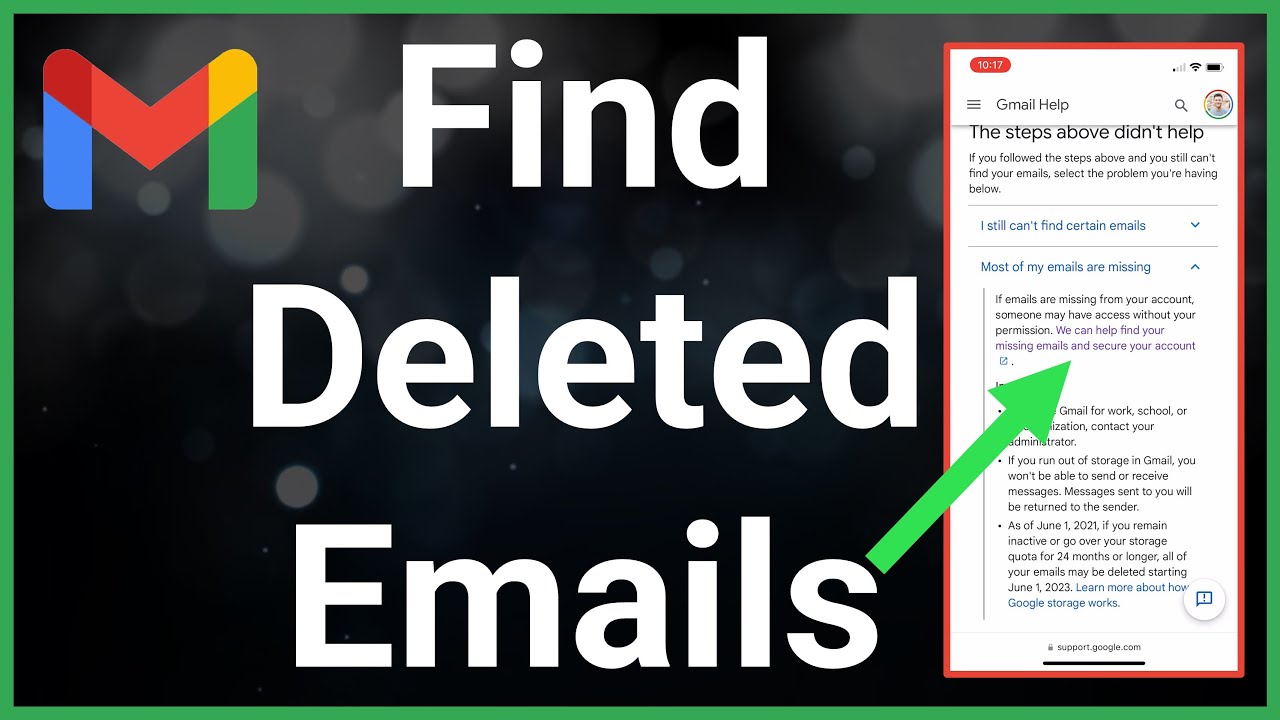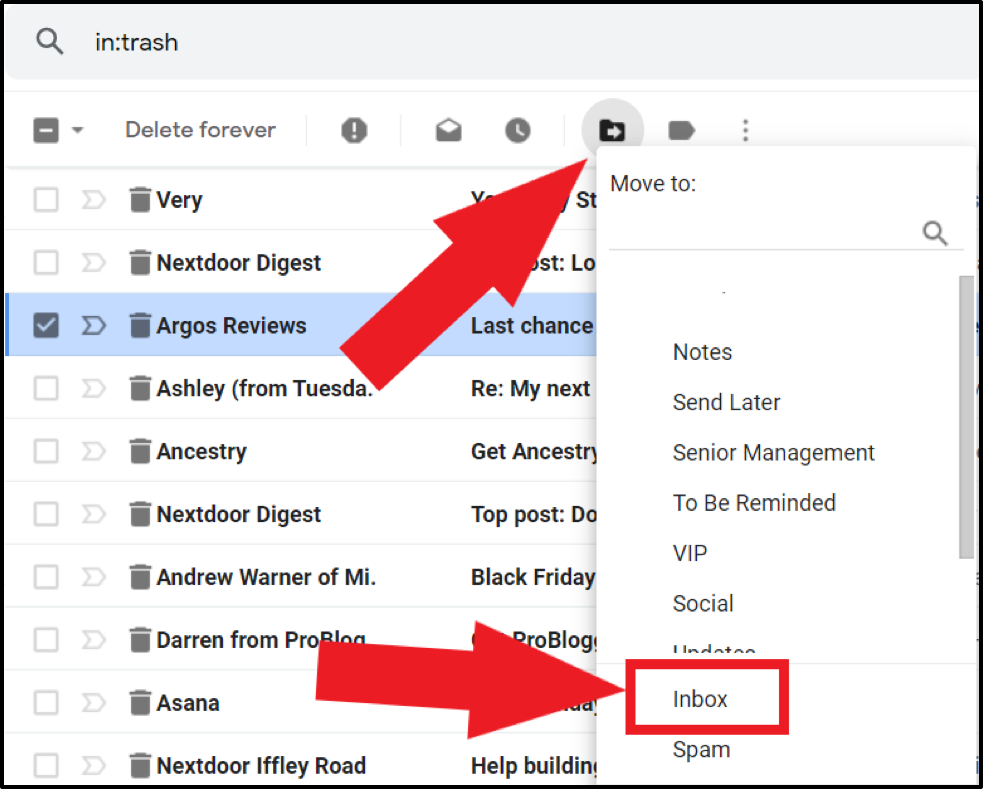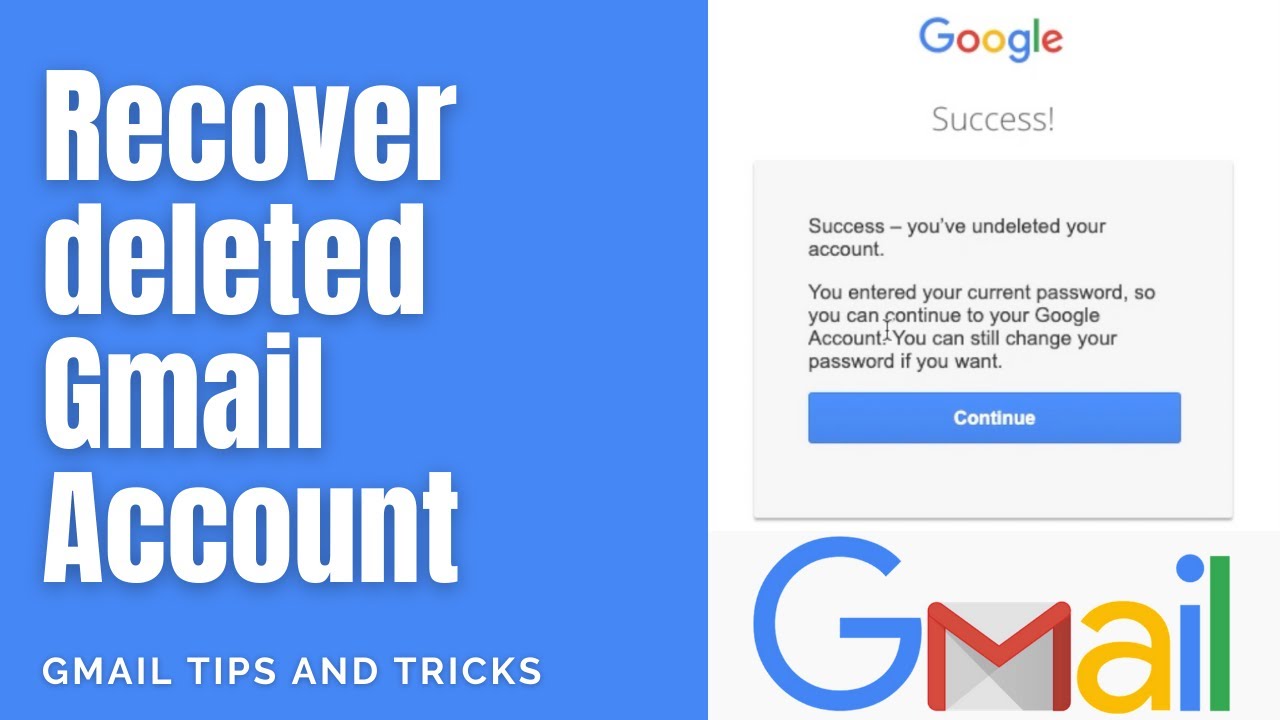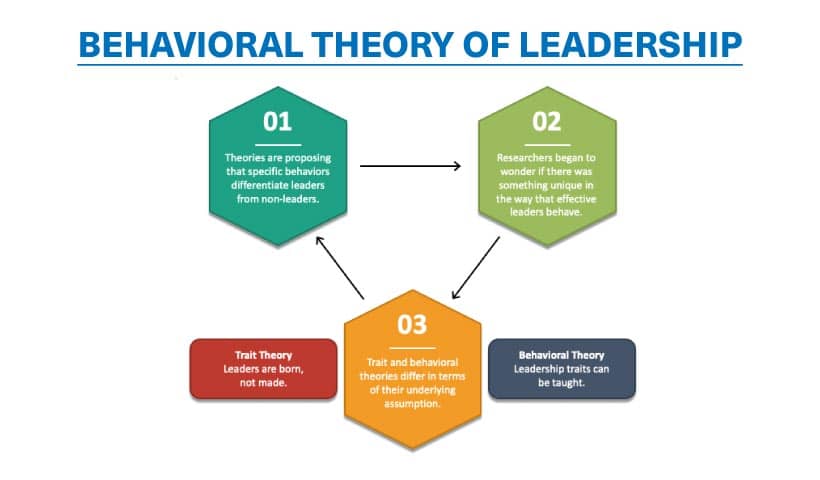5 Steps to Restore Deleted Gmail Emails

Gmail, with its vast storage and efficient organization system, is a popular choice for personal and professional communication. However, the deletion of important emails can be a common yet distressing occurrence. Whether it's an accidental swipe or a misguided attempt to declutter, the loss of crucial information can lead to inconvenience and potential productivity setbacks. Fortunately, Gmail offers a safety net with its robust recovery features, providing users with a second chance to retrieve their deleted emails. In this comprehensive guide, we will explore a five-step process to effectively restore deleted Gmail emails, empowering users to regain control over their digital communication and mitigate potential consequences.
Understanding the Gmail Email Recovery Process

When you delete an email in Gmail, it doesn’t disappear immediately. Instead, it is moved to the Trash folder, where it remains for a period of 30 days. This is Gmail’s way of providing a safety buffer, allowing users to recover emails they may have accidentally deleted. However, after 30 days, these emails are permanently deleted and cannot be recovered. Understanding this timeline is crucial for successful email recovery.
The recovery process involves navigating through Gmail's various folders and settings to locate and restore the desired emails. While it may seem straightforward, it requires a systematic approach and an understanding of Gmail's unique features. By following a step-by-step guide, users can maximize their chances of recovering their deleted emails and minimize the impact of such incidents.
Step 1: Accessing the Trash Folder

The first step in the email recovery process is to locate and access the Trash folder in Gmail. This folder serves as a temporary holding area for deleted emails, giving users a chance to review and recover them before they are permanently deleted.
To access the Trash folder, log in to your Gmail account and click on the More label at the top of the screen. From the drop-down menu, select Trash. This will open the Trash folder, displaying all the emails that have been deleted within the past 30 days. If the desired email is present, you can proceed to the next step.
However, if the email is not found in the Trash folder, it may have been permanently deleted or moved to another folder. In such cases, it's essential to explore other recovery options, which we will cover in the subsequent steps.
Step 2: Searching for Deleted Emails
If the desired email is not in the Trash folder, it’s time to employ Gmail’s powerful search feature to locate it. Gmail’s search functionality allows users to search through all their emails, including those that have been deleted or archived.
To search for a deleted email, click on the Search bar at the top of the Gmail interface and enter specific keywords or phrases related to the email. Gmail will scan through all your emails, including those in the Trash and other folders, to find relevant results. The more specific your search terms, the better the chances of finding the desired email.
For example, if you're searching for an email from a specific sender regarding a project, you can enter the sender's name and the project name in the search bar. Gmail will display all emails containing those keywords, making it easier to locate the deleted email.
If the email is found, you can proceed to the next step to restore it. If not, it's time to explore more advanced recovery methods.
Advanced Search Techniques
To enhance your search capabilities, Gmail offers advanced search operators that allow for more precise and targeted searches. These operators can be particularly useful when searching for deleted emails.
One useful operator is the has:attachment operator, which allows you to search for emails with attachments. For example, if you remember that the deleted email had an important document attached, you can enter has:attachment in the search bar to narrow down the results.
Another operator is older:x, where x represents the number of days. This operator helps you search for emails older than a certain number of days. If you remember approximately when the email was deleted, you can use this operator to refine your search.
Additionally, you can combine multiple operators and keywords to create complex search queries. For instance, from:sender older:7days has:attachment will search for emails from a specific sender, older than 7 days, and with attachments. These advanced search techniques can significantly improve your chances of finding the desired deleted email.
Step 3: Recovering Emails from the Trash Folder
Once you’ve located the desired email in the Trash folder, the next step is to recover it. Gmail provides a straightforward process for restoring deleted emails from the Trash folder.
To recover an email from the Trash folder, simply select the email by clicking on the checkbox next to it. Then, click on the More button at the top of the screen and select Move to Inbox from the drop-down menu. Alternatively, you can right-click on the email and select Move to Inbox.
Gmail will promptly move the selected email back to your Inbox, making it accessible once again. You can repeat this process for multiple emails if needed.
It's important to note that recovering emails from the Trash folder is a temporary solution. These emails will remain in your Inbox until you manually delete them again. To ensure long-term access, consider archiving the recovered emails or creating a dedicated folder for important emails.
Step 4: Recovering Permanently Deleted Emails

If the desired email is not found in the Trash folder or has been permanently deleted, there is still a chance to recover it using Gmail’s advanced recovery tools.
Gmail maintains a backup of all emails, even those that have been permanently deleted. To access this backup, you'll need to navigate to the All Mail folder, which contains all your emails, including those in the Trash and other folders.
To access the All Mail folder, click on the More label at the top of the screen and select All Mail from the drop-down menu. This will open the All Mail folder, displaying all your emails, including those that have been permanently deleted.
If the desired email is found in the All Mail folder, you can recover it by following the same process as recovering emails from the Trash folder. Simply select the email and move it back to your Inbox.
However, if the email is not found in the All Mail folder, it may have been deleted from Gmail's servers. In such cases, the recovery process becomes more complex and may require assistance from Google's support team.
Contacting Google Support for Email Recovery
If you’re unable to find the desired email in the Trash folder or the All Mail folder, it’s time to reach out to Google’s support team for assistance. Google provides dedicated support channels to help users with various issues, including email recovery.
To contact Google support, visit their Gmail Help Center and search for "email recovery." You'll find detailed instructions on how to submit a request for email recovery. It's important to provide as much information as possible, including the approximate date and time of deletion, the sender's email address, and any unique details about the email.
Google's support team will review your request and attempt to recover the deleted email from their backup servers. While there is no guarantee of success, their expertise and advanced tools significantly increase the chances of a successful recovery.
Step 5: Preventing Future Email Deletions
While recovering deleted emails is crucial, it’s equally important to take preventive measures to minimize the occurrence of such incidents in the future. Gmail offers several features and settings to help users avoid accidental deletions and manage their emails more effectively.
Setting Up Email Filters
Email filters are a powerful tool to organize and manage your emails automatically. By setting up filters, you can ensure that important emails are directed to specific folders, reducing the chances of accidental deletion.
To set up an email filter, click on the Settings gear icon at the top right of the Gmail interface and select See all settings. Navigate to the Filters and Blocked Addresses tab and click on Create a new filter. Enter the email address or keywords associated with the emails you want to filter, and select the desired actions, such as skipping the Inbox or marking important emails.
Filters can be particularly useful for managing emails from specific senders, newsletters, or emails containing certain keywords. By directing these emails to dedicated folders, you can easily access them without the risk of deleting them accidentally.
Archiving Emails
Archiving emails is an effective way to remove them from your Inbox while keeping them accessible. Unlike deleting, archiving emails preserves the content and allows for easy retrieval when needed.
To archive an email, simply select the email by clicking on the checkbox next to it and then click on the Archive button at the top of the screen. Gmail will move the selected email to the All Mail folder, keeping it safe and organized.
Archived emails can be easily accessed by opening the All Mail folder or by searching for them using Gmail's search feature. This method is ideal for emails that you want to keep but don't need immediate access to.
Creating Custom Labels and Folders
Gmail allows users to create custom labels and folders to organize their emails more effectively. By assigning specific labels or moving emails to dedicated folders, you can easily locate and manage important emails without the risk of deletion.
To create a custom label, click on the Settings gear icon and select See all settings. Navigate to the Labels tab and click on Create new label. Enter the label name and choose whether you want it to be nested under another label. You can also choose to apply the label to existing emails by selecting the appropriate option.
Similarly, to create a new folder, click on the Settings gear icon and select See all settings. Navigate to the Labels tab and click on Create new label. In the pop-up window, check the box next to Show in label list and select New folder from the drop-down menu. Enter the folder name and click Create. You can now move emails to this folder by dragging and dropping or using the move to option.
Conclusion: Empowering Users with Email Recovery
The process of restoring deleted Gmail emails is a crucial skill for anyone relying on digital communication. By following the five-step guide outlined in this article, users can effectively recover their deleted emails, minimizing the impact of accidental deletions and ensuring uninterrupted productivity.
Understanding the Gmail email recovery process, from accessing the Trash folder to utilizing advanced search techniques, empowers users to take control of their digital communication. The ability to recover emails from the Trash folder, All Mail folder, and even with the help of Google's support team, provides a comprehensive safety net for users.
Additionally, by implementing preventive measures such as setting up email filters, archiving important emails, and creating custom labels and folders, users can further enhance their email management skills and minimize the risk of future deletions. Gmail's robust features and tools make it an ideal platform for efficient and secure communication.
In conclusion, the art of restoring deleted Gmail emails is a valuable skill that every user should master. By following this comprehensive guide and adopting best practices, users can ensure that their digital communication remains organized, accessible, and secure, even in the face of accidental deletions.
Can I recover emails deleted more than 30 days ago from Gmail’s Trash folder?
+No, once an email has been in the Trash folder for 30 days, it is permanently deleted and cannot be recovered. Gmail’s retention policy ensures that emails are purged from the system after this period.
What if I can’t find the desired email in the Trash folder or All Mail folder?
+If you’re unable to locate the email in these folders, it may have been permanently deleted from Gmail’s servers. In such cases, you can contact Google support for assistance. They may be able to recover the email from their backup servers.
Are there any limitations to the number of emails I can recover at once?
+There are no specific limitations on the number of emails you can recover at once. However, it’s recommended to recover emails one by one to ensure a smooth process and avoid any potential issues.



